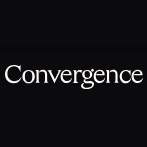Agentic AI Comparison:
Convergence Proxy vs Convergence Proxy AI
Introduction
This report provides a comparative analysis of two AI agents developed by Convergence AI—Convergence Proxy and Convergence Proxy AI—focusing on metrics that matter to enterprise users and developers: autonomy, ease of use, flexibility, cost, and popularity. Both agents originate from the same platform and share core technology, but there are notable distinctions in their capabilities, deployment context, and reception.
Overview
Convergence Proxy AI
Convergence Proxy AI refers to the latest iteration and branding of the Convergence Proxy platform, with expanded autonomous capabilities, deeper workflow integration, and application in complex dynamic environments. It excels in web-based automation, adapts to changing digital interfaces, and was acquired by Salesforce in May 2025 for integration into Agentforce—broadening its market reach and enhancing reputation.
Convergence Proxy
Convergence Proxy is an AI-driven virtual assistant leveraging Large Meta Learning Models (LMLMs) to autonomously acquire new skills, efficiently manage repetitive tasks, and integrate into diverse enterprise workflows. It emphasizes security, compliance, and scalability, and stands out for dynamic learning and robust API support. Proxy is recognized for excellent benchmark performance, outperforming several industry leaders in specific tasks.
Metrics Comparison
autonomy
Convergence Proxy: 9
Proxy employs LMLMs to learn and execute tasks without direct human intervention, including scheduling, data entry, and email management. Long-term memory and continual adaptation enable high operational autonomy.
Convergence Proxy AI: 10
Proxy AI builds on Proxy's autonomy, extending capability for multi-step, dynamic digital workflows and automated interaction with changing web environments. Its integration with Agentforce by Salesforce reinforces its leading position in autonomous enterprise agents.
While both agents are highly autonomous, Proxy AI offers deeper automation and adaptability, especially post-acquisition.
ease of use
Convergence Proxy: 8
Proxy features a Template Hub allowing access to ready-to-use templates and a user-centric interface that enables intuitive skill-teaching. However, some reviews indicate the learning curve for advanced workflows and limitations in the free version.
Convergence Proxy AI: 8
Proxy AI maintains user-centric onboarding and template features, but its more advanced integrations may require additional setup knowledge, especially for enterprise-scale deployment.
Both are streamlined for quick onboarding and skill deployment; complexity increases for advanced use cases typical in Proxy AI.
flexibility
Convergence Proxy: 9
Highly flexible—can operate across various platforms (Salesforce, Slack, G Suite) and customize workflows by learning from user behavior. Continual skill acquisition and memory integration further enhance flexibility.
Convergence Proxy AI: 10
Proxy AI improves on this flexibility by handling dynamic interfaces and complex multi-system automations, enabling seamless adaptation to evolving business environments.
Proxy AI offers superior flexibility in rapidly changing or heterogeneous digital ecosystems.
cost
Convergence Proxy: 9
Proxy offers a generous free plan with core features and a $20/month Pro plan (20 sessions, unlimited runs, 20 automations). Enterprise pricing is custom, and the offering is considered potentially disruptive given its lower cost compared to many competitors.
Convergence Proxy AI: 8
Proxy AI's cost structure matches Proxy for small teams, but integration with enterprise platforms post-Salesforce acquisition may increase the total cost of ownership for larger deployments, depending on custom integrations.
Proxy is slightly more cost-effective for individuals and SMBs; Proxy AI suits enterprises better but might have increased costs tied to Salesforce integration.
popularity
Convergence Proxy: 8
Proxy achieved significant early adoption thanks to strong performance, industry buzz from high-profile founders, and broad community engagement. Recognized for outperforming OpenAI and Anthropic agents in select benchmarks.
Convergence Proxy AI: 9
Proxy AI's popularity surged following Salesforce's acquisition announcement and subsequent integration into Agentforce, boosting visibility, platform adoption, and enterprise trust.
Proxy AI’s association with Salesforce has amplified its market reach and industry attention beyond Proxy's strong initial community.
Conclusions
Convergence Proxy and Convergence Proxy AI share foundational technology, but their distinction lies in scale, enterprise integration, and future trajectory. Proxy is optimal for individuals and SMBs seeking strong autonomy and cost-effectiveness. Proxy AI, especially after acquisition, delivers top-tier autonomy, flexibility, and visibility in enterprise contexts and is positioned for continued evolution. Organizations should select based on workflow complexity, integration needs, and budget constraints.

